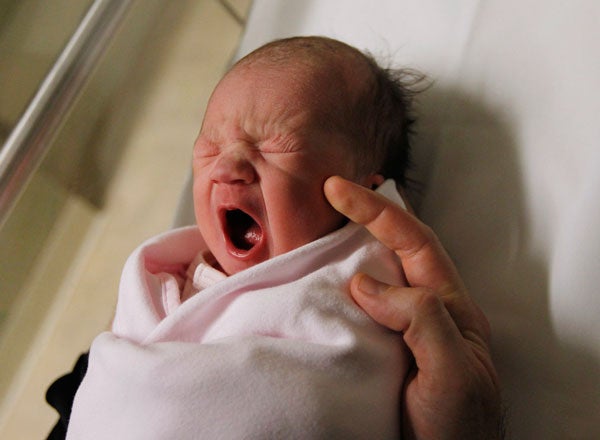U.S. teen births are at historic lows.
Following what has been a generally steady trend over the last two decades, the teen birthrate once again saw declines in 2010, according to a new report from the U.S. Center for Health Statistics (CHS).
The data show that 16 states saw notable declines in teen births since 2007, ranging from 20 percent to 29 percent. In 31 states, the rate dropped by at least 8 percent. And teen births dropped among all races. Notes The Washington Times: “In three groups of teens—blacks, American Indians, and Alaska Natives and Asian and Pacific Islanders—the 2010 rates were more than 50 percent lower than the 1991 peak.”
Because of the decreases of the last two decades, notes the CHS report, approximately 3.4 million fewer babies were born to teen mothers (of which nearly all would have been to single mothers).
Fewer unwed births to these young women is good news, but this decline unfortunately does not translate to an overall reduction in unwed births. In fact, while teen births have gone down, the unwed birthrate has climbed by more than 45 percent since 1990. In 1990, 28 percent of births were to single mothers, whereas in 2010 that number exceeded 40 percent.
This is because teens account for only a small portion of unwed births, especially if only considering high school girls. While less than 8 percent of unwed births are to girls under 18, nearly 75 percent are to women between 18 and 29. Rather than a teen issue, the majority of unwed childbearing is a result of the breakdown of marriage relationships among young men and women in lower-income communities.
The breakdown in marriage is driving the growth in unwed childbearing, accounting for headlines such as that reported by The New York Times last month, which heralded that the majority of all births in the United States to women under age 30 are to single mothers, a 56 percent increase since 1990. The majority of these are to women with a high school diploma or less.
The increase in unwed births has occurred across all racial groups, where rates currently stand at 29 percent for whites, 53.3 percent for Hispanics, and 72.5 percent for African Americans.
The breakdown of marriage and the subsequent growth of unwed childbearing should be of major concern, considering its strong association with poverty. Children in single-parent homes are more than five times as likely to be poor as their peers in married-parent homes, and not surprisingly, single-parent families are also much more likely to be dependent on government welfare. Additionally, children raised outside of married-parent homes are at greater risk for a variety of negative outcomes.
Yet, despite the major growth in unwed childbearing and the problems associated with it, there has been a “pervasive social silence” on this matter. While there is much chatter about teen birthrates, the overriding issues of marriage breakdown and unwed childbearing are too often ignored.
With more than five decades of nearly steady increases in the unwed birthrate and the growing societal inequality it creates, it is time to stop tiptoeing around this issue. Strengthening marriage requires that all sectors of society take action to reinforce the institution that is most crucial to the prosperity of individuals and to the entire nation.
